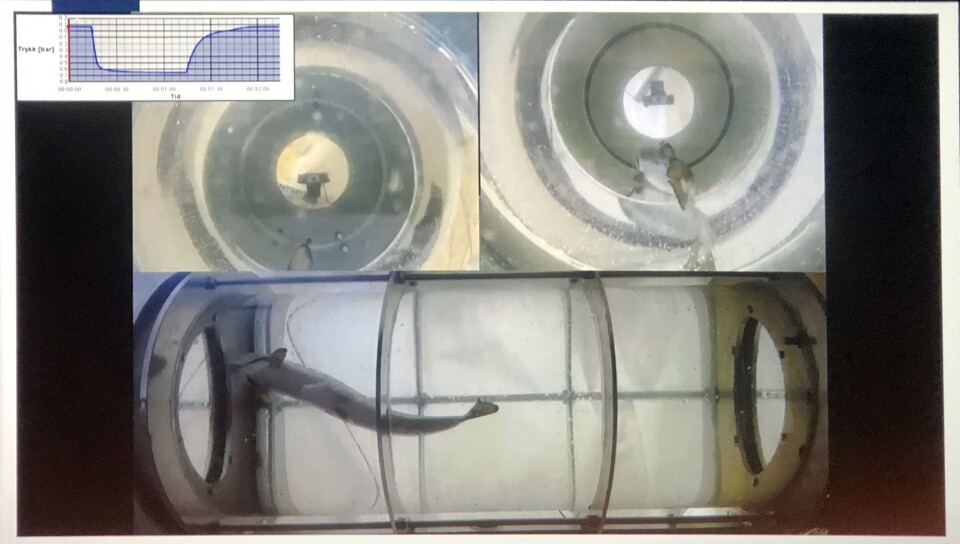
Negative pressure affects farmed salmon behaviour
What happens to a salmon that is exposed to negative pressure, something it occurs when it is sucked up from the cage in connection with handling? Attempts have been made to find out as part of a project in Norway.
Speaking at the Fresh Fish Conference in Bergen yesterday, Birger Venås from research organisation SINTEF gave details of an experiment carried out as part of the project “Technological tools for objective documentation of the welfare of salmonids in handling operations (OWITOOLS)”.
In June 2021, an experiment was carried out at the LetSea experimental station where salmon were exposed to rapid, negative pressure changes in a pressure chamber.
Limited research
“The background for the experiment is that there is limited literature available on whether pressure affects salmonids. At the same time, business actors have expressed concern about the issue and the extent to which this contributes as a total burden on the fish during handling operations,” Venås said.
The purpose of the experiment was to see the connection between negative pressure changes and changes in fish behaviour, physiology and pathology.
“Salmon in their natural environment are never exposed to negative pressure and the lowest pressure a salmon experiences is at the water surface. Farmed salmon, on the other hand, are exposed to negative pressure in various operating situations in connection with movement and treatment when the fish are sucked into suction hoses,” explained Venås.
Lifting height
The negative pressure the fish are exposed to depends to a large extent on the lifting height, the location of the pumps and the design of the system.
In the experiment, fish were exposed to pressure equivalent to being sucked up into a pipe at a speed of 2 metres per second, some were exposed to 3 metres per second, while a small group received negative pressure corresponding to a full 7-8 metres per second to guarantee a response.

Air released
Venås showed a video of fish in a pipe that suddenly experienced negative pressure. The fish showed a clear change in behaviour, and you could see that it released air from the swim bladder through the mouth. It did this throughout the minute that it was under negative pressure. When the pressure quickly returned to normal, it was seen that the fish lost buoyancy and sank to the bottom of the system. The control fish was not shown, but the audience was told that it was completely calm throughout the experiment.
“These are also effects that you hear are seen in a wellboat, where the fish like to lay to the bottom to begin with after being pumped on board,” said the researcher.
No other changes seen
Beyond behavioural change, it has so far not been possible to demonstrate other effects.
“There was no significant change in either cortisol or lactate, nor did we see histological changes. Macro scores have so far not been analysed, but no damage to the swim bladder had been observed,” said Venås.
He said that a scientific article about the experiment will soon be finished, where there will also be a focus on behavioural observation using machine vision.























































